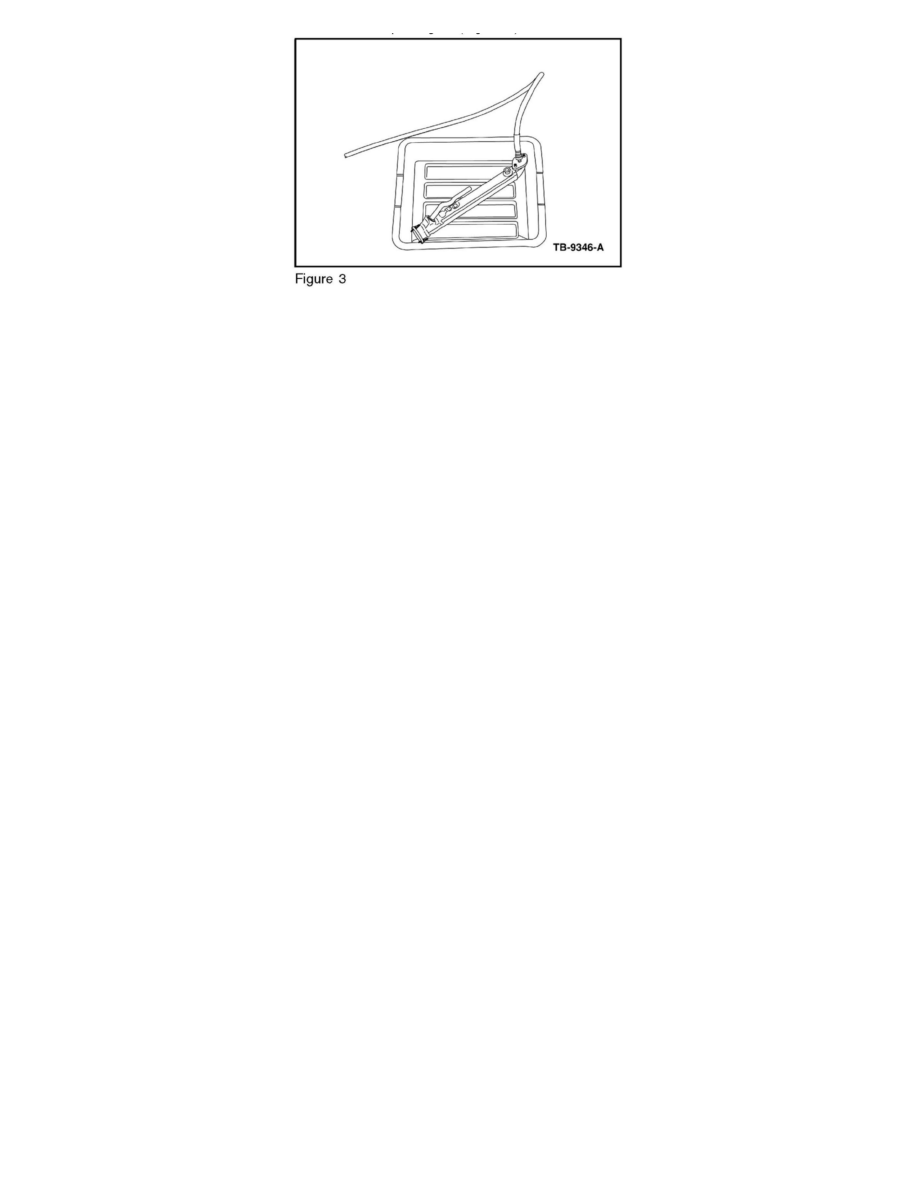Excursion 4WD V8-6.0L DSL Turbo VIN P (2004)

c. Submerge the EGR cooler horizontally in the water, with the coolant ports pointing upward. Manipulate the cooler under water to purge all
trapped air from the internal coolant passages. (Figure 3)
d. Inspect for continuous bubbles escaping from the coolant ports.
(1) If continuous bubbles identify a leak, replace the EGR cooler and service the oil cooler with an Oil Cooler Kit. Refer to the WSM, Sections
303-01C and 303-08 for additional information and go to Step 7.
(2) If bubbles do not identify a leak, an external leak was missed in Step 1. Install the original EGR cooler and exit this procedure. This
procedure should not be performed until all external cooling system leaks have been repaired.
5. Road Test For Restricted Oil Cooler - Setup and Observations:
a. Install integrated diagnostic system (IDS), select engine coolant temperature (ECT) and engine oil temperature (EOT) PID's on IDS Datalogger.
b. Carefully drive the vehicle at wide open throttle (WOT) / high load to achieve maximum boost.
NOTE
FOR ACCURATE TEST RESULTS, ECT TEMPERATURE MUST BE GREATER THAN 190 0F (88 °C) WHEN MEASURING THE ECT AND
EOT MAXIMUM TEMPERATURE DIFFERENTIAL.
NOTE
PERFORMING THIS TEST STEP OUT OF SEQUENCE CAN RESULT IN INACCURATE TEST RESULTS. THIS CAN BE CAUSED BY A
LEAKING EGR COOLER ALLOWING (HOT) COMBUSTION GASES TO ENTER THE ENGINE COOLANT AND ARTIFICIALLY
RAISING ECT READINGS.
c. Observe ECT and EOT PID's on IDS Datalogger. EOT maximum temperature differential might occur at throttle tip-out.
(1) If EOT is within 15 °F (8.4 °C) degrees of the ECT, go to Step 7.
(2) If EOT exceeds ECT by 15 °F (8.4 °C) or more at any time during the test, go to Step 6.
6. Service Oil Cooler and Pressure Test EGR Cooler Off Vehicle:
a. Service oil cooler with an Oil Cooler Kit per WSM, Sections 303-01C and 303-08.
b. EGR cooler leak test - off vehicle:
(1) Remove the EGR cooler from the engine following Workshop Manual (WSM), Section 303-08.
(2) Install cooler block-off tools and pressurize the EGR cooler to 30 psi (207 kPa). Fasten the inlet and outlet port block-off plates using
standard bolts, nuts and washers. (Figure 2)
NOTE
FOR VERY SMALL LEAKS, IT MAY BE REQUIRED THAT EGR COOLER REMAIN SUBMERGED FOR UP TO 15 MINUTES TO AID IN
LEAK IDENTIFICATION. THIS TIME IS NEEDED TO ALLOW SMALL LEAKS TO DISPLACE ENOUGH WATER FROM THE COOLANT
PASSAGES TO BECOME EVIDENT.
(3) Submerge the EGR cooler horizontally in the water, with the coolant ports pointing upward. Manipulate the cooler under water to purge all
